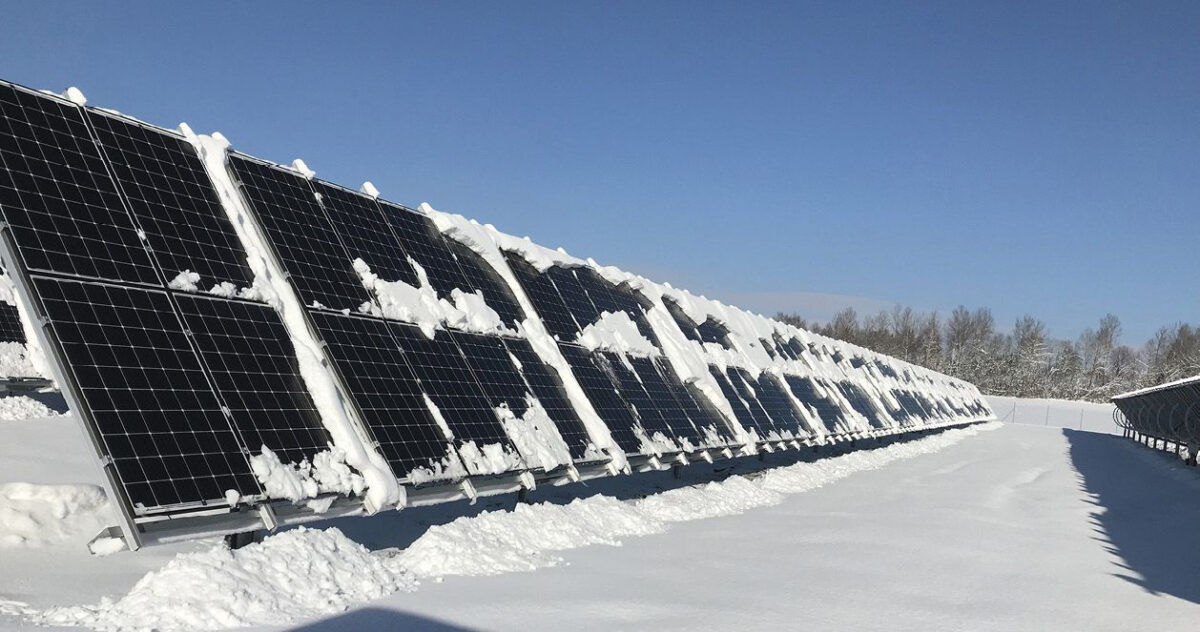https://www.pv-magazine.com/2023/10/21/weekend-read-data-harvesting/
Data harvesting

A 60-degree tilt angle can be useful for dumping snow in the winter.
Photo: Schletter Group
Farmers are under pressure. Cost pressure, environmental pressure, regulatory pressure. There are obvious reasons to diversify income streams but there’s also every reason to avoid additional risk.
For most farms, agrivoltaics means fixed installations, often on rooftops – well-established technology with predictable costs and returns. But things are changing. Pilot schemes for farm-based solar projects are popping up across the European countryside, testing the mounting industry’s latest innovations in the process.
Land demand
Cormac Gilligan, a director at analyst S&P Global with a focus on solar and energy storage, told pv magazine that mounting system development is in lockstep with land scarcity. In mature solar markets, the best utility-scale sites have been snapped up, fueling demand for cost-efficient ways to install solar on more rugged terrain.
Gilligan said most of the tracking systems the solar mounting industry has brought to market recently have been designed with undulating terrain in mind. That enables trackers to be installed at higher gradients, reducing the need for costly soil levelling on undulating sites. From the land developer’s perspective, cutting capital expenditure is a win. In the agricultural sector, things get much more complex.
Making the business case for farm-based PV is not a simple calculation. There’s a balance to be struck between farming yield and energy output. That’s why projects that experiment with different mounting systems in different locations and with different crops are so important. Gilligan’s colleague Joe Steveni, a research analyst at S&P Global, said that these schemes will help to paint a more general picture of what works well in
different agricultural settings.
“If you have a successful pilot in northern France, you’ll have a good understanding for the south of France,” Steveni said. “It will spread.”
In the field
In North Rhine-Westphalia, Germany, a new pilot scheme promises to provide data on how solar installations affect crop yield and quality while investigating potential auxiliary benefits ranging from improved irrigation to a reduced need for crop protection. By the end of this year, three different types of mounting system will be installed at the site. Research will start at the beginning of 2024 and is set to run for at least five years.
Located on seven hectares of recultivated land at the Garzweiler opencast mine, near Bedburg, the pilot scheme is a partnership between energy giant RWE and the national research institute Forschungszentrum Jülich, with financial support provided by the state government. The demonstration plant will have a peak generation capacity of 3.2 MW.
Berries on the farm will grow beneath PV modules elevated on a high structure created by Zimmerman PV-Stahlbau. It is predicted that the steel company’s mounting system will be a good fit for berry cultivation as crops including raspberries and blueberries can tolerate shade.
Popular content
Vertical-aligned solar mounting systems from Next2Sun are also being installed at the site, spaced at intervals wide enough to allow harvesting machinery between the module rows. On the tracker front, Schletter Group’s 2P Tracker System is being installed in rows that both follow the sun and deliver additional benefits.
Alongside investigating crop suitability and cultivation methods, research will focus on how the solar installations can be optimized so that standard components can be used as much as possible. RWE said this would reduce the levelized cost of energy and should lead to an “acceleration of the market ramp-up of agri-PV.”
On the agricultural side, there is a lot to learn. Matthias Meier, project leader for agrivoltaic activity at Forschungszentrum Jülich, told pv magazine that the scheme could provide the kind of insights that farmers need to invest with confidence.
“Farmers are asking about the costs of these kinds of systems,” he said. “They are used to making quite big investments with their machinery, and a lot also have rooftop PV. They know how to deal with that but agri-PV is an uncertain technology for them. I cannot say ‘if you put it on your sugar beet field you can harvest as much as without agri-PV’, or ‘you can calculate this kind of factor.’ This we cannot say at the moment and this is the most uncertain point.”
Proven tech
There may be unknowns for farmers but there’s real certainty coming from solar mounting system suppliers. Christian Salzender, the head of project sales at Schletter Group, said pilot schemes are not really trials for his business, so much as demonstrations.
“We know the system works but we also want to show it to our clients in small sample installations,” he said.
Salzender said trackers offer more efficiency and therefore leave more space for farming and growing. Schletter’s system can also move to 60 degrees from the horizontal, creating space for harvesting machines and the potential to dump snow from modules during the winter.
Operation and maintenance costs have also been improved in the latest generation of tracker systems, Salzender added. “Mechanical failures are as likely as in cars,” said the Schletter representative. “The overall components are well proven throughout different industries.”
This content is protected by copyright and may not be reused. If you want to cooperate with us and would like to reuse some of our content, please contact: editors@pv-magazine.com.



